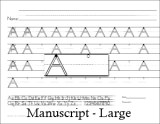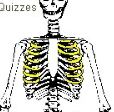Lab WU Grader
Lab WU is a flexible grader and requires a spreadsheet program. It does not store grades, it is not a grade keeper, it is a science lab write-up evaluation tool that is included with the grade keeper 12-16 Lab WU. See Also: Lab Write Up Grader Help.
Lab WU science lab grader was originally my composition grader that I made many years ago. Lab WU actually is a composition grader. The ONLY thing that makes Lab WU a science lab grader is the criteria. Read more below.
What is criterion to the homeschooler when grading?
Lab WU [Lab Write-Up]
Lab WU is not yet available as a stand alone grader. It is included in 12-16 Lab WU
Criteria (plural) are the rules and standards that will be used when evaluating a student's work. Criteria must have been covered in class in order to fairly issue a grade. We use criteria to systematically teach and then evaluate a student's work. (Criteria is plural of criterion.)
In Lab WU the criteria are broken down into sections and details.
In the sample data I have included these sections:
Appearance, Purpose, Hypothesis, Materials, Procedure, Results, Analysis, Conclusion
The sample data in Lab WU is actual sample data.
You are not to use the grader as is.
You must change the criteria to suit what is expected in the particular lab.
If you want to keep a copy of the original sample data then make a copy of it. Note: a copy of Lab WU is included in the file that is downloaded after 9/10/10.
How to make a copy of a sheet in Excel:
1. Unprotect the sheet
2. Right-click the tab of the sheet that you want to copy.
3. Check the Make a copy box.
4.
Choose the location of the sheet.
5. Press OK
see images of this process [scroll down to Eight Copies Not Enough?]
6. Protect both of the sheets.
Suggestion: If you intend to use this file over and over for the same co-op class and for the same book, I suggest that you create a new copy of Lab WU for every lab type so you will not have to change the criteria in Lab WU for each lab next year.
The Sample Data
Appearance
The write-up is legible and neat.
The write-up contains a title for the experiment and date
Purpose
Write-up contains a clear purpose
Purpose is concise.
Hypothesis
Write-up includes hypothesis
Hypothesis is an if/then statement
Materials
Write-up includes supply list
Supply list is complete
Procedure
Write-up includes a procedure
Procedure is very clear
Procedure steps are sequential
Procedure is complete
Procedure is not too wordy
Results
Write-up includes notes taken of observations made during experiment.
Notes are labeled or titled
Charts or drawings are neat and labeled
Analysis
Write-up includes analysis
Charts/drawings that should be included are
Charts/drawings/analysis details are clear
Conclusion
Write-up includes conclusion regarding hypothesis.
The Student and Scientific Method
Critical Detachment: In the case of the lab report, most of the criteria seem to align with basic writing skills and the thought processes behind writing. The lab report is a unique type of report and students should go about the lab and the report with careful attention to detail and maintain a critical detachment.
Proving Themselves Right: Students who set out to willfully prove themselves right, thus ignoring or skewing data that does not prove them right, ought to be corrected immediately. Ignoring or skewing data does not produce actual scientific results. Students must adhere to the scientific method.
Donna Young, August 17, 2009
Edited April 12, 2017


 Edward Hopper - Compartment C, Car 293
Edward Hopper - Compartment C, Car 293
 Skeleton - in Life Science
Skeleton - in Life Science


